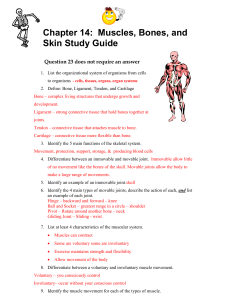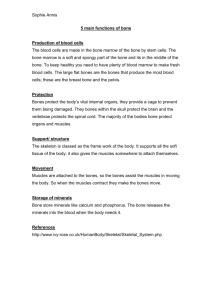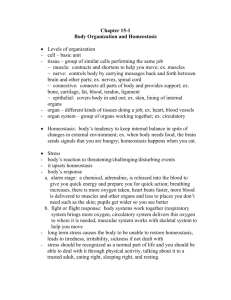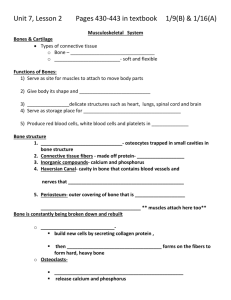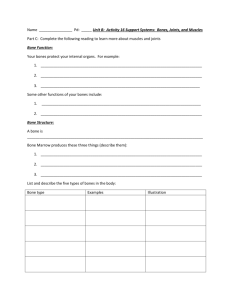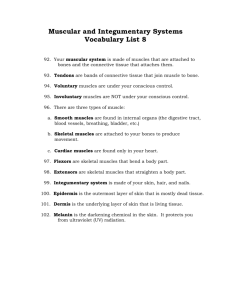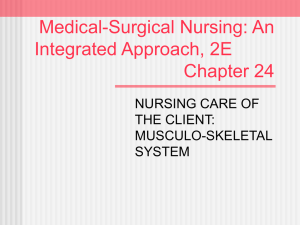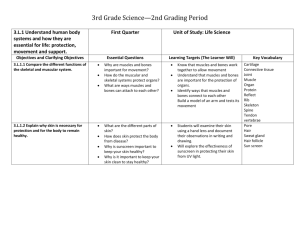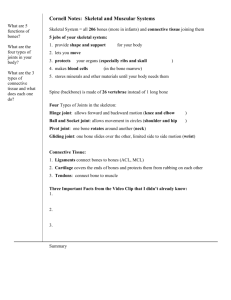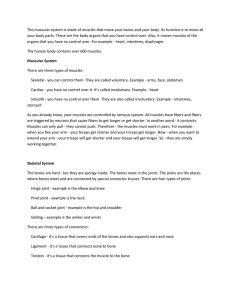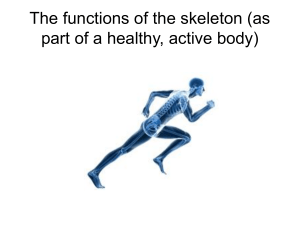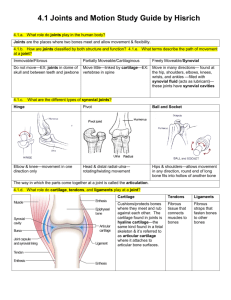Body Organization Section 1-3 Quiz - Junction Hill C
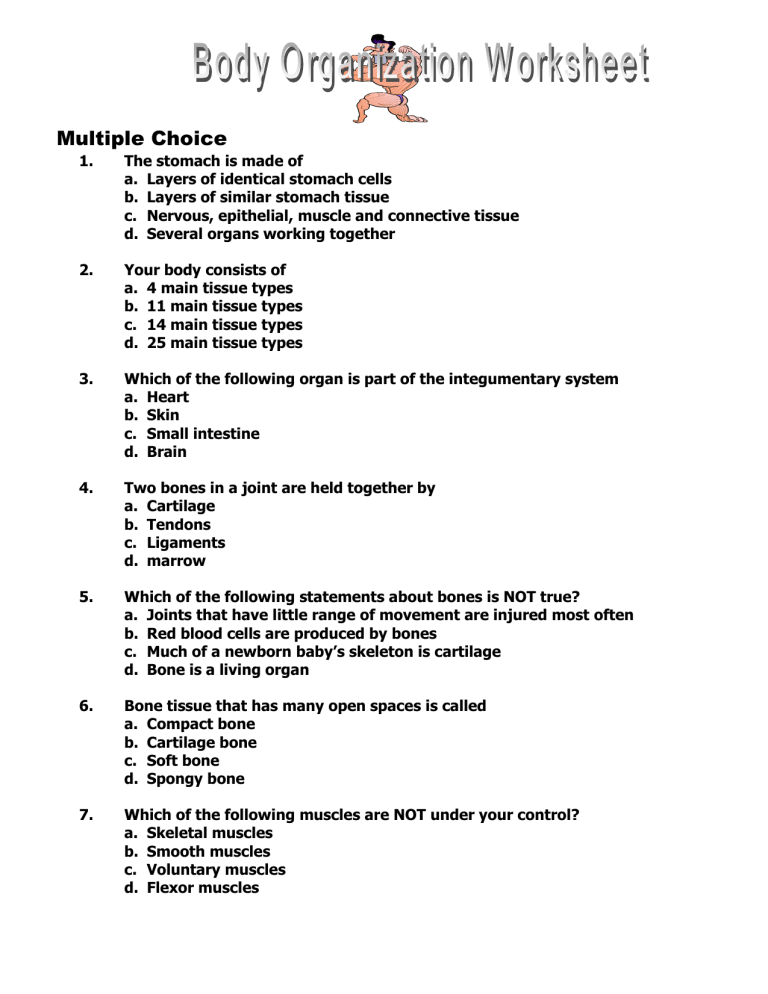
Multiple Choice
1.
The stomach is made of a.
Layers of identical stomach cells b.
Layers of similar stomach tissue c.
Nervous, epithelial, muscle and connective tissue d.
Several organs working together
2.
Your body consists of a.
4 main tissue types b.
11 main tissue types c.
14 main tissue types d.
25 main tissue types
3.
Which of the following organ is part of the integumentary system a.
Heart b.
Skin c.
Small intestine d.
Brain
4.
Two bones in a joint are held together by a.
Cartilage b.
Tendons c.
Ligaments d.
marrow
5.
Which of the following statements about bones is NOT true? a.
Joints that have little range of movement are injured most often b.
Red blood cells are produced by bones c.
Much of a newborn baby’s skeleton is cartilage d.
Bone is a living organ
6.
Bone tissue that has many open spaces is called a.
Compact bone b.
Cartilage bone c.
Soft bone d.
Spongy bone
7.
Which of the following muscles are NOT under your control? a.
Skeletal muscles b.
Smooth muscles c.
Voluntary muscles d.
Flexor muscles
8.
Anabolic steroids are dangerous because they can a.
Cause damage to internal organs b.
Cause high blood pressure c.
Cause the skeletal system to stop growing d.
All of the above
Fill in the blank
9.
The ______________________ consists of your bones, cartilage, and the connective structures that hold it all together.
10.
Muscles are attached to your bones by tough connective tissues called
__________________________
11.
To increase the size and strength of your skeletal muscles, you engage in
_____________________ exercises.
12.
Your body’s ability to maintain a stable internal environment is called
____________________________
Short Answer
13.
Name and describe the four types of tissue
14.
Describe the four functions of bones
15.
Describe the three types of joints and give an example of each
16.
Describe the three types of muscle and give an example of each





